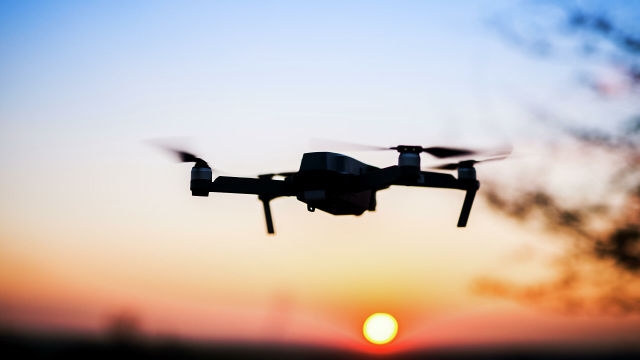The drone has optical and infrared cameras, as well as folding wings on which a solar battery is installedMOSCOW, January 14.
/tass/. The Moscow Border Institute of the FSB has patented a solar-powered unmanned aerial vehicle (UAV) with a projectile generator of electromagnetic pulses to defeat drones or enemy electronic means. This follows from the patent for the invention distributed by the Federal Institute of Industrial Property (available to TASS).
"An unmanned aerial vehicle for the destruction of enemy electronic means consists of an unmanned aerial vehicle of the carrier and a warhead separated from it. The body of an unmanned aerial vehicle of cylindrical shape, with rudders, surveillance equipment and folding wings retracted inside the body, is placed in a transport and launch container. The warhead is a detachable rocket projectile with an explosive electromagnetic pulse generator and a remote detonation system," the patent text says.
The drone has optical and infrared cameras in the upper and lower hemispheres of the body, in the middle part there are folding wings, on which, as well as on the upper part of the body, a solar battery is installed. Inside the drone body there are control and communication systems, a GLONASS system unit, a battery, a parachute system and an electric motor with a screw with folding blades. The solid-fuel booster detachable unit is located in the rear of the case.
It is assumed that the drone will be transported in a folded state to the area where the enemy uses drones or electronic means, after which it will be released into the air from the launch container. The solid-fuel engine takes the device to a height exceeding the height of the enemy UAV flight, then disconnects, and the drone begins horizontal flight: the wings are unfolded, the rudders and cameras are pushed out of the body and the motor screw released after separation of the upper stage starts working. At the same time, power is provided by the energy of the battery and the solar battery, and, as the developers note, in this mode, the drone is able to barrage in the area for a long time and transmit the state of the air and ground situation to the control point.
When a target is detected, the drone approaches it as quickly as possible, including due to the speed of descent, and when the distance of defeat is reached, it launches a combat charge on command from the command post. "When approaching an object at a distance of destruction, an explosive generator of electromagnetic pulses generating EMR is detonated using a remote detonation system (electromagnetic radiation - approx. TASS) of high power, leading to the destruction of the element base of electronic means and, as an additional effect, the defeat of the enemy by the components of an explosive electromagnetic pulse generator," the developers explain.
As stated in the patent documentation, the drone can be used to fight both single targets and a swarm of drones. Moreover, since the device delivers a live charge close to the target, safety is ensured for "its" radio-electronic devices. The UAV can be used repeatedly: after an attack, it flies up to the base and descends on a parachute system.

